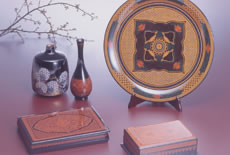
Kagawa Urushi Lacquer Ware consists of a wide range of products from high-quality craftwork to items of every day use. This versatility is unique among traditional products made throughout the country. From home furnishings such as tables and decorative shelves to small items, such as trays, confectionary boxes, vases, etc., it is diverse in its array of uses. There are special characteristics that accompany each production technique and each application of urushi, giving the craft a very subtle elegance. Kinma (with its Chinese stylings), Zonsei, Choshitsu, Gotonuri (with its elegant shadings of vermillion), and Zokokunuri (considered a refined choice of tea experts), etc. are all techniques that are praised for their refined dignity. These five urushi techniques are designated as National Traditional Crafts.
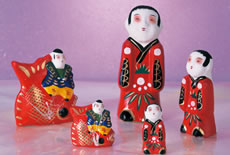
Since long ago toy shops and doll shops have lined the streets of Kajiyamachi in Takamatsu, and the town has produced a large variety of children’s toys. One of the crafts produced here since that time is papier-mâché. In particular, papier-mâché masks and dolls called "Deco-san" became the favorite playthings of many children. Of even greater fame was the doll called “Hoko-san,” whose simplicity resonated with many people and who became popular throughout the whole country.
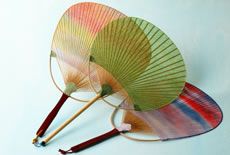
Paddle-shaped uchiwa fans ward off heat, make festivals more colorful, and delight our eyes when used as fashion accessories. The city of Marugame produces about 90% of all uchiwa made in Japan. These fans have evolved beyond their original functions, and the makers pour their souls into them as they take unique skills passed down through generations and carefully go through each process, keeping in mind the people who will eventually use the fan.
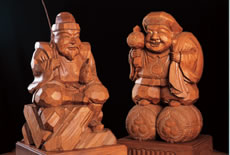
Sanuki Itto-bori Wood Carvings: The origins of Sanuki Itto-bori Wood Carvings can be traced back to the year 1837 and the construction of the Asahi Shrine, which is located halfway up the stairway of the Kotohira-gu Shrine and boasts a two-tiered, gabled roof. The most skillful shrine carpenters from throughout the whole country gathered here, and during their afternoon breaks they would compete to see who could make the best wood carvings with their carpenter’s chisels. These carvings were first made as souvenirs in the shape of flat, wooden darma dolls. Later they were carved into the shapes of the Seven Lucky Gods, Buddhist statues, and various other kinds of ornaments. Long ago, the carvings were made from the wood of Shinto shrines’ camphor trees, with the bark still attached. Today, they are made from camphor trees, as well as from the wood of pine trees that contain beautiful patterns of resin.
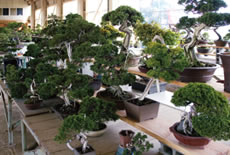
Kinashi-cho in Takamatsu is well known for its bonsai. These tiny trees have a long history in Kinashi, starting more than two hundred years ago, when local people dug up pines that grew naturally along the coast of the Seto Inland Sea, transplanted them into pots, and sold them. Bonsai represent a wonderful harmony between natural and artificial beauty, and they are steadily increasing in popularity. Today, about 80% of all pine bonsai produced in Japan come from this area. Kinashi bonsai are also exported overseas, making them a product that is loved throughout the world.
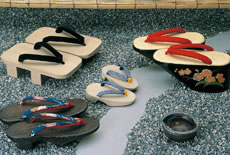
House sandals and fair-weather sandals were first produced in Shido Town in Sanuki City in 1907, and the town soon became Japan’s leading production area for paulownia geta sandals. Paulownia geta sandals are made from naturally dried paulownia wood and undergo about 40 processes before becoming complete products. Paulownia wood is light, warm, absorbs moisture, and is good at maintaining temperature. Thus, these sandals are said to be the perfect footwear for humid Japan.
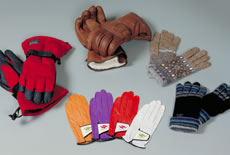
The eastern part of Kagawa boasts 90 percent of the share of the glove production throughout all of Japan. Glove production began here during the middle of the Meiji Period, and as the times have changed so too have the type of gloves made – including warm gloves, fashion gloves, sports gloves, leisure gloves, etc. Highly fashionable and highly functional, gloves from Kagawa are even sold throughout the world market.
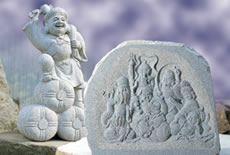
The aji-ishi granite found in the areas of Aji and Mure Towns in Takamatsu City is high in quality and fine in texture, and the processing techniques in this area have flourished since long ago. Aji-ishi has a beautiful, glossy surface, which makes it ideal for the production of stone lanterns, grave markers, building materials, garden ornaments, etc. Also famous are the yura-ishi (used in the Imperial Palace), and the Aoki-Yoshima stones quarried in Kagawa. Kagawa is one of Japan’s leading prefectures in stone material production and shipment.

